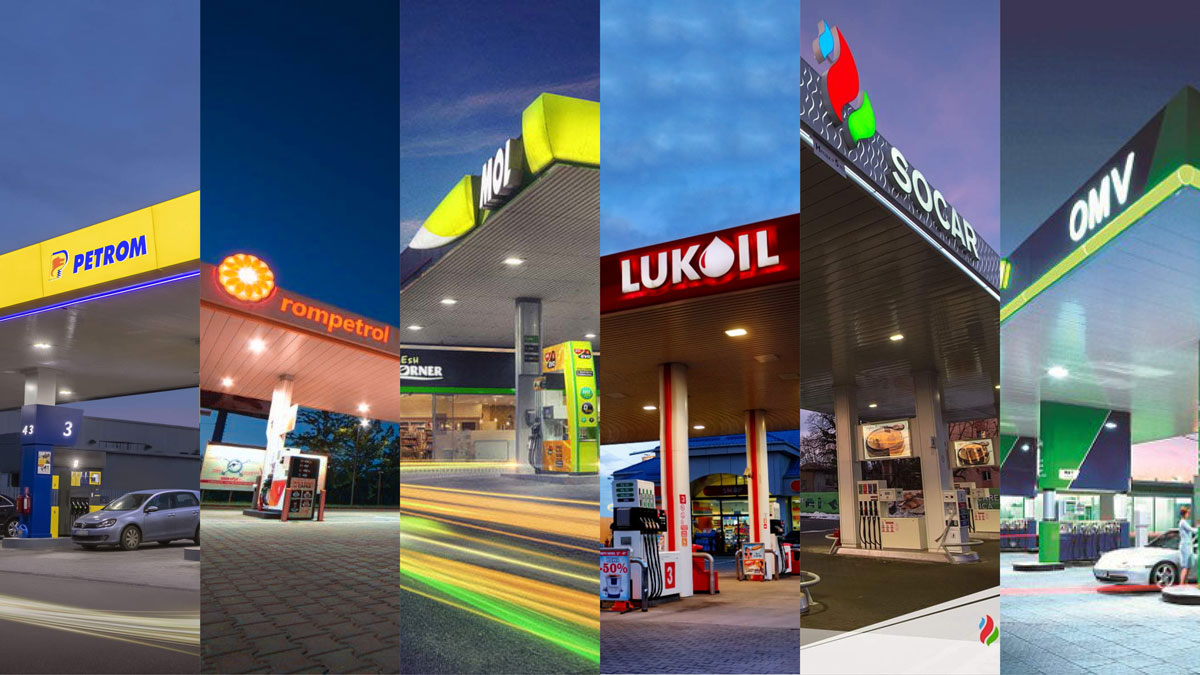Fuel Market Developments
The beginning of the year has brought massive price increases for fuels, electricity and natural gas, the entire economy and household users being affected. As regards gasoline and diesel, the increase in excise duty overlapped a skyrocketing oil price on the international market and, more recently, the war in Ukraine. Unfortunately, the bad news does not seem to stop here.
However, sources from the fuel distribution market mentioned that there have been increases in the quantities sold, a cause being psychological in nature, purchasing larger quantities today to protect from the unavoidable price increase in the coming days. As such, the amounts collected by stations, respectively by companies, are on the rise.
At the end of February, there were no fuel distribution stations displaying prices below RON 7 per litre for usual gasoline and diesel assortments. These massive price increases in such a short time have got the authorities thinking, so policymakers came to an agreement in principle on halving the excise duty for fuels. The measure would be temporary and should lead to the decrease by RON 1 in the price at the pump.
Oil price exceeded USD 100/bbl
In this volatile context, oil prices have reached the highest level in eight years and probably things will not be stable soon either, especially given that the National Bank of Romania announced a record, two-digit inflation for the second quarter of this year. On February 24, oil prices exceeded the psychological threshold of USD 100/bbl for the first time since 2014, the increase being recorded amid Russia’s attack on Ukraine. We shouldn’t ignore the fact that Russia is the second largest oil producer in the world, which sells crude oil mainly to European refineries, and is the largest gas supplier to Europe, covering approximately 35% of its supplies.
Therefore, Brent oil price reached a maximum of USD 101.34/bbl in Asia, while the futures price of the US crude West Texas Intermediate (WTI) climbed by USD 4.22, or 4.6%, to USD 96.32/bbl, also the highest level since August 2014.
Growing sales for companies in 2021
In 2021, oil companies had very good results from the marketing business, the Hungarian group MOL even registering a record volume of fuel sales in Romania, by approximately 5% higher than the previous historical record, registered in 2019. A first explanation would be that, in addition to the increase in demand due to the economic recovery, the largest domestic refinery, Petromidia, operated by Rompetrol, was closed in the third quarter, quarter with the largest sales in the history of MOL group in Romania, following the explosion in early July. The largest player on the fuel market remains OMV Petrom, which last year increased its sales by 350 thousand tons (equivalent to 7%) compared to the previous year.
Electric vehicles decrease diesel production
Amid the growth of hybrid and electric cars sales and the announcement by the main manufacturers that they will cease in the following years the production of cars using this type of fuel, global diesel reserves have dwindled significantly. Diesel and heavy fuel oil reserves held in independent storage in the Amsterdam-Rotterdam-Antwerp (ARA) refining and storage area fell by 2.5% in February, according to data from Dutch consultancy Insights Global, while regional reserves reached the lowest level since 2008 to date, for this period of the year.
Medical tourism, replaced by fuel tourism in Europe
After medical tourism, from which our country has benefited in recent years, thanks to lower prices of services compared to the countries of origin of patients, now the fuel tourism has appeared. Therefore, after the Slovaks went to refuel their cars in Hungary, starting in February, they went to the Polish gas stations to fill their tanks and canisters with cheaper fuel. Gasoline and diesel in Poland are by approximately 25 to 35 eurocents cheaper per litre, as Warsaw has decided to reduce VAT for these energy products in response to increased inflation. Moreover, an increasing number of Czechs and Germans refuel in the neighbouring countries, and several filling stations have announced that they were forced to close for several hours because they ran out of fuel.
Blocking the distribution chains will also be to blame for the rising prices at the pump, at least for a short term.
What are the independent filling station operators in Romania doing?
Fuel price increases have also affected the sales of independent filling station operators, especially in February, when the price of gasoline or diesel exceeded the level of RON 7/litre. Ion Tache, president of the Association of Independent Filling Station operators, believes the right price would be around RON 6/litre, with variations from RON 5.5/litre to RON 6.3/litre for normal gasoline and diesel products, and specialized gasoline and diesel should be maximum RON 6.5/litre.
On average, a station owned by an independent operator has sales of around 3,500 litres per day, by 3-4 times less than those affiliated to large market players. The latter no longer hold entirely the chains of filling stations, being operated in fact by different economic entities, in the form of franchise or partners.
An independent partner, who owns over 10 stations in Muntenia region, says prices cannot vary more than 5% compared to those of the parent network, and the way the products are arranged on the shelf and non-core services offered to customers are also standardized. The advantage of those who have chosen to work in such a system, under the umbrella of a large market player, lies in its notoriety and location.
The most known chains of independent filling stations are Octano, Carbogaz, Euroil, RBC Gas, UTA, Forte Gas, Florea Grup, Etu (which owns near Ploiesti the largest filling station in Romania), some being operated or managed by former directors of large market operators.
Not being compelled to comply with certain standards, as it happens in the case of those who operate under the umbrella of an established operator, independent stations provide services such as minimarket, fast money transfers, tire repair, car wash and even the issuance of insurance policies.
In any case, the situation for the independent filling station operators is increasingly difficult, in conditions in which, at the beginning of the year, their supply is also more difficult, and the profit margins have fallen significantly.







